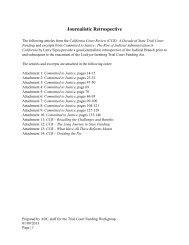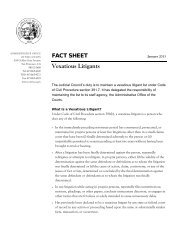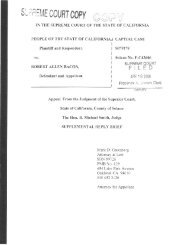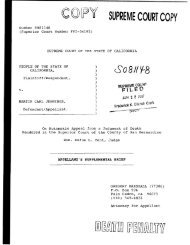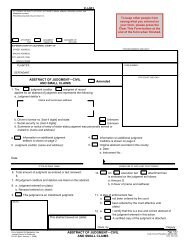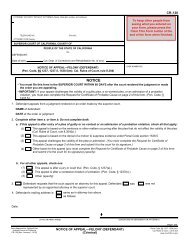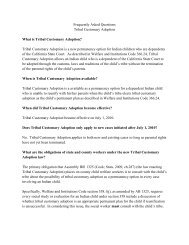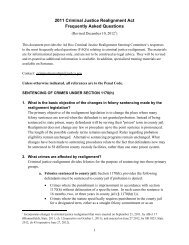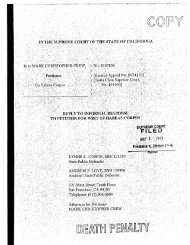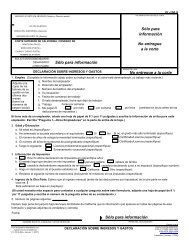Appellant, William Satele, Reply Brief - California Courts - State of ...
Appellant, William Satele, Reply Brief - California Courts - State of ...
Appellant, William Satele, Reply Brief - California Courts - State of ...
Create successful ePaper yourself
Turn your PDF publications into a flip-book with our unique Google optimized e-Paper software.
does not result in federal constitutional error within the meaning <strong>of</strong> Apprendi v.<br />
New Jersey (2000) 530 u.s. 466: 3 Rather, Sengpadychith found the instructional<br />
error to be a matter <strong>of</strong> state law error subject to the Watson test. (People v.<br />
Sengpadychith, supra, 26 Ca1.4th at pp. 320-321.) Respondent thus contends that<br />
because appellant was sentenced to an indeterminate term, the Watson standard is<br />
the governing standard <strong>of</strong>review. (RB at p. 158-159.)<br />
However, appellant did not predicate his claim that Chapman was the<br />
appropriate governing standard for this instructional error on Apprendi grounds.<br />
Instead, appellant's claim is based upon Mitchell v. Esparza (2003) 540 U.S. 12,<br />
16, and the cases cited therein pertaining to the trial court's failure to instruct a<br />
jury on all <strong>of</strong> the statutory elements <strong>of</strong> an <strong>of</strong>fense. (See AOB at p. 78.) The<br />
United <strong>State</strong>s Supreme Court has concluded in a series <strong>of</strong>cases that various forms<br />
<strong>of</strong> instructional error are federal constitutional trial errors subject to Chapman<br />
harmless-error review. (See, e.g., Neder v. United <strong>State</strong>s (1999) 527 U. S. 1<br />
(omission <strong>of</strong> an element <strong>of</strong> an <strong>of</strong>fense); <strong>California</strong> v. Roy (1996) 519 U.S. 2<br />
(erroneous aider and abettor instruction); Pope v. Illinois (1987) 481 U.S. 497<br />
(misstatement <strong>of</strong> an element <strong>of</strong> an <strong>of</strong>fense); Rose v. Clark (1986) 478 U.S. 570<br />
(erroneous burden-shifting as to an element <strong>of</strong>an <strong>of</strong>fense).<br />
Recently, on December 2, 2008, the U.S. Supreme Court held that<br />
harmless-error review was the governing standard in a federal habeas case in<br />
which the defendant was convicted by a jury that had been instructed on<br />
alternative theories <strong>of</strong> guilt, one <strong>of</strong> which was invalid 4 • (Hedgpeth v. Pulido<br />
(2008) _ U.S. _; 129 S.Ct. 530; 172 L.Ed.2d 388, "Pulido".)<br />
3 In Apprendi v. New Jersey (2000) 530 U.S. 466, the U.S. Supreme Court held as<br />
a matter <strong>of</strong> federal constitutional law: "Other than the fact <strong>of</strong> a prior conviction,<br />
any fact that increases the penalty for a crime beyond the prescribed statutory<br />
maximum must be submitted to a jury, and proved beyond a reasonable doubt."<br />
(Id. at p. 490.)<br />
4 Pulido observed that Neder had made clear "that harmless-error analysis applies<br />
to instructional errors so long as the error at issue does not categorically , "<br />
44



